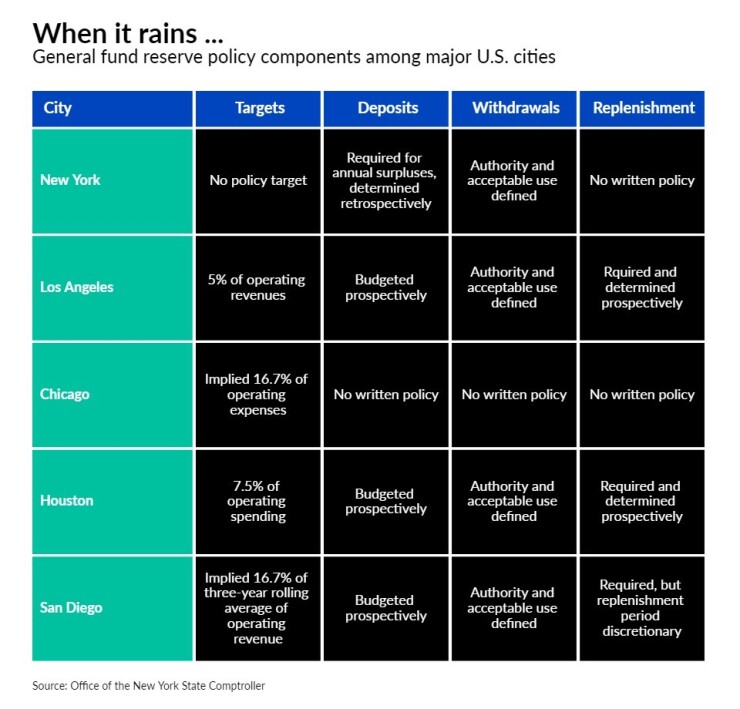Incoming New York Mayor
New York’s mechanisms are less defined than other U.S. cities', state Comptroller Thomas DiNapoli said in a
Following voter approval of a charter revision in November 2019 and state legislative signoff, city officials established a rainy-day fund — formally the revenue stabilization fund — in February 2021. That made available $499 million in resources that the city could not use to balance its fiscal 2020 budget.
A $500 million deposit in fiscal FY 2022 will bring the total reserve to almost $1 billion.

“The next administration and the City Council not only have an opportunity to build these reserves in the near term, but also to shape the city’s reserve policy for years to come,” DiNapoli said.
DiNapoli cited reviews by credit rating agencies suggesting governments that develop and maintain solid fiscal reserve policies may derive better ratings than peer issuers.
S&P Global Ratings and Moody’s Investors Service rate the city’s general obligation bonds AA and Aa2, respectively. Fitch Ratings assigns AA-minus while Kroll Bond Rating Agency rates the bonds AA-plus. All four assign stable outlooks.
Adams said during campaign appearances he favors making regular deposits to the rainy-day fund and firming up the law.
The city traditionally has maintained surplus money through accounts ranging from the general reserve to the Retiree Health Benefits Trust. The requirement — in place since the city emerged from its 1970s fiscal crisis — to budget according to generally accepted accounting principles prohibited a rainy-day mechanism.
Nine other U.S. cities in DiNapoli’s report have built more significant unrestricted reserves over time.
Best practices, DiNapoli said, include publishing reserve-policy statements on websites; defining the purpose of the unrestricted general fund reserves; determining methods used to determine adequacy; providing a strong legislative check on drawdowns; and requiring replenishment of all resources drawn down from the reserves as soon as possible.
New York City’s unrestricted reserve levels were 0.6% at the end of fiscal 2021, though additional forms of budgetary cushion increase these levels to about 8% of expenditures.
The next recession “may not be as far off as some may hope,” Ana Champeny and Andrew Rein of the Citizens Budget Commission said in a commentary.
“Even though New York City’s recovery is nascent and precarious, the city should start building the reserves needed,” they said. Since 1975, when the city flirted with bankruptcy, the average length of a recovery in New York state has been just under six years.
“The incoming administration should deposit funds regularly into the [rainy-day fund] and improve its legal framework,” Champeny and Rein said.
Because the state’s enabling law allows withdrawals when there is no recession or emergency, Champeny and Rein urged the city to enact a local law to limit withdrawals to a legally defined recession or severe emergency.
“To bolster the fund over time, the new city law should mandate deposits when the economy is expanding,” they added.
CBC recommends the city deposit 75% of the tax revenue growth beyond 3% per year, along with deposits when available due to other circumstances, such as the current massive influx of federal aid.
“Planned deposits should be reflected in the city’s four-year financial plan,” Champeny and Rein said.





